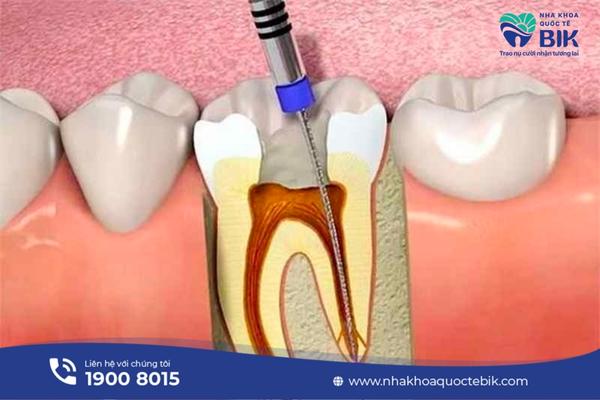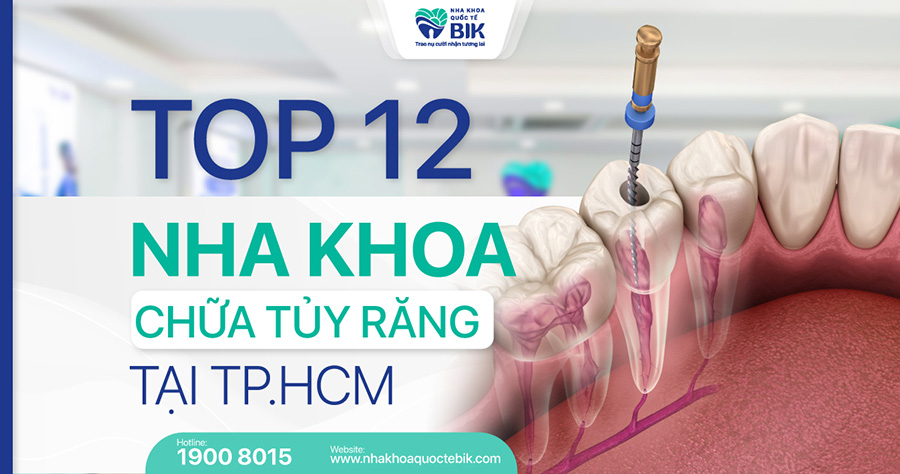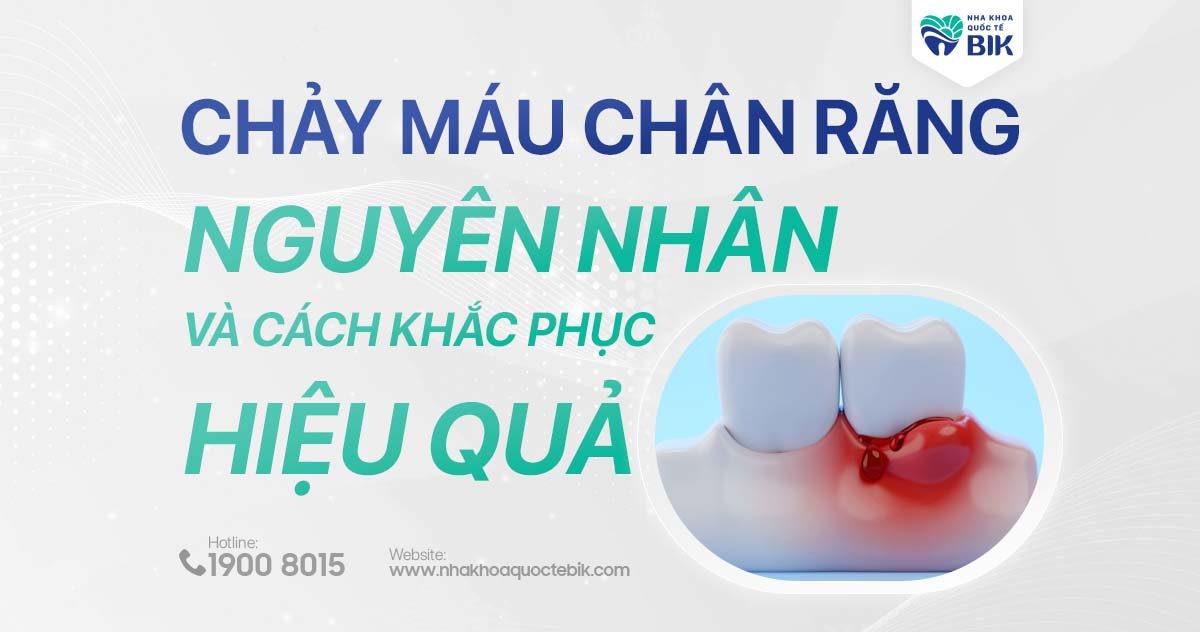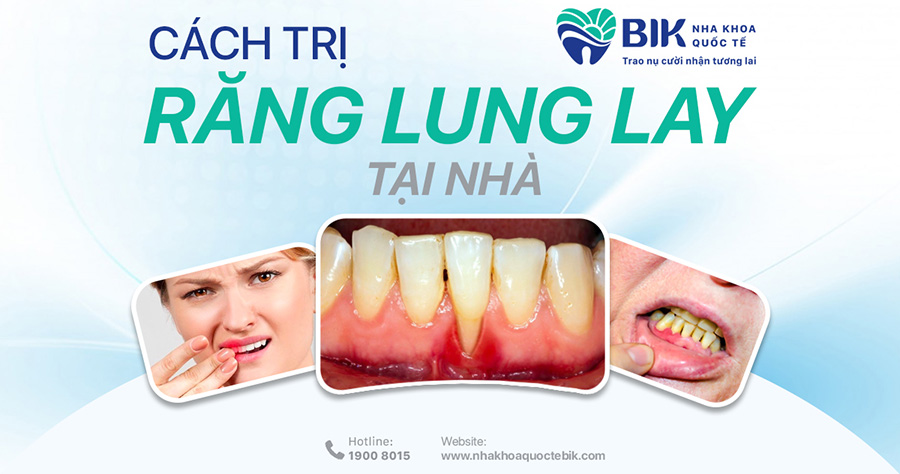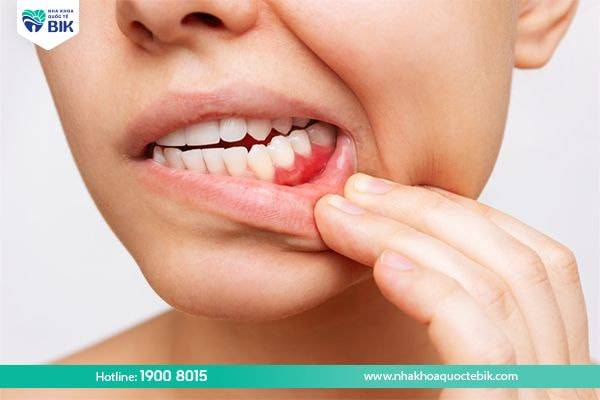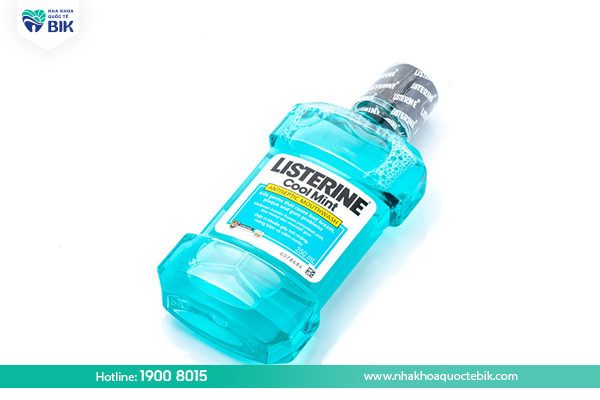Root canal treatment is the only effective treatment for pulpitis and pulp death today. Root canal treatment will help customers feel more comfortable because the pain and discomfort caused by inflammation will disappear after only about a day. However, there are cases where customers will experience persistent pain after root canal treatment due to many different reasons. At this time, customers can apply some ways to reduce toothache after root canal treatment at home before going to the dentist for examination and treatment again.
1. What is root canal treatment?
The tooth pulp is the innermost part protected by enamel and dentin on the outside. This is an important part that contains all the nerves, so it can be considered the “heart” of the tooth. This means that if the pulp is damaged to a certain extent, the tooth can no longer be used.
For the condition of the tooth pulp being infected for some reason, the doctor will prescribe a root canal to overcome the pain and discomfort. If the dead tooth pulp is not removed in time, it will lead to pus around the tooth, jaw bone and create a tooth abscess, seriously affecting oral health, causing pain and destroying the tooth bone.
After the tooth pulp is removed from the root canal, the tooth body will be cleaned, shaped and filled to prevent the pulpitis from recurring again.
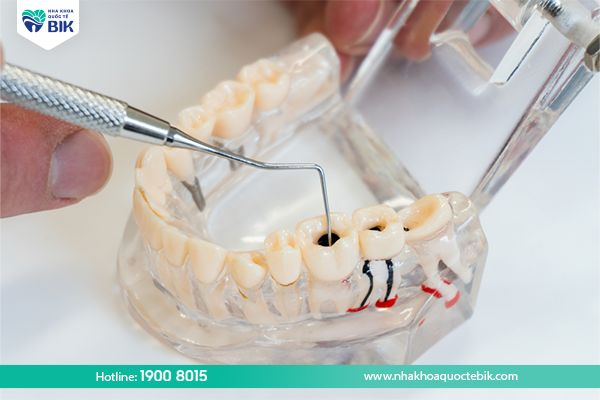
2. Abnormal symptoms after root canal treatment
After root canal treatment, if there are no problems, the customer will only feel the following symptoms and there is absolutely no need to worry:
2.1. Normal symptoms
– No pain, feeling like normal teeth.
– Feeling tooth sensitivity for about 1 – 24 hours and then disappearing completely. This phenomenon depends on the condition of the tooth as well as the location of the root canal treatment.
– After root canal treatment, there is no feeling when not chewing, but when chewing, there is a feeling of pain. This phenomenon usually disappears after 2 – 3 days.
– Mild pain or severe pain when lightly touching the tooth.
2.2. Abnormal manifestations
However, if the patient notices the following manifestations, it is abnormal after root canal treatment:
– Toothache after root canal treatment: After root canal treatment, the patient usually no longer feels pain due to inflammation.
– If the tooth still hurts, it is an abnormal manifestation after root canal treatment.
– Gum swelling after root canal treatment: The cause of gum swelling after root canal treatment may be periodontitis that was not thoroughly treated before root canal treatment. Or it may be because the root canal treated tooth has died, creating a chronic periapical inflammation or the tooth has broken after root canal treatment.
– Gum swelling but no pain: In case the tooth has a cavity on the side after root canal treatment, food will get stuck in that position and cause gum swelling. In addition, gum swelling but no pain after root canal treatment can also be due to periodontitis or chronic periapical inflammation that only hurts when pressed.

3. Why do you feel pain after root canal treatment?
Patient’s pain after root canal treatment may be due to the following factors:
3.1. Due to doctor’s misdiagnosis
This is one of the least common causes but not impossible. For example, there are many cases of trauma to many teeth due to accidents leading to infection, pulp death or the case of two teeth next to each other having pain but in fact only one tooth has damaged pulp.
The doctor’s misdiagnosis will certainly cause the inflamed pulp to not be removed properly, leading to prolonged pain. Therefore, it is very important for customers to have root canal treatment at a reputable dental clinic with a team of highly skilled and experienced doctors to achieve the highest treatment efficiency.
At BIK International Dental Clinic, customers are always assigned to have an X-ray before treatment to assess the most accurate pulpitis condition, thereby providing the most suitable method for each customer.
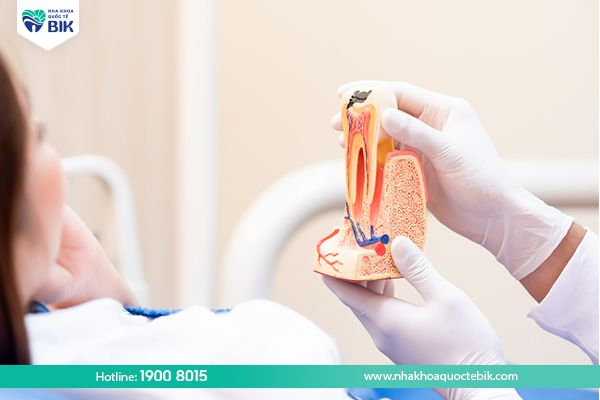
3.2. Missing root canal or pulp tissue
The principle of root canal treatment is to completely remove all inflammatory tissue in the root canal. However, there may be some of the following reasons why the root canal is not cleaned, leading to pain after root canal treatment:
– Too many root canals: Each tooth will have a different number of root canals. For incisors and canines, there is usually only one root canal, so cleaning is also very easy. For premolars and molars, the number of root canals can be 2 – 3 or even 5. In addition, the system of secondary root canals in teeth is also very rich and small in size, and cannot be observed with the naked eye. Therefore, if the treating doctor is not highly skilled and does not observe, it is very easy to miss the root canal.
– Root canals have a complex shape: If the root canal is straight, only slightly curved, then removing the root canal will be very easy. However, if the root canal is too curved, has an S-shape or is deformed, completely cleaning the pulp tissue will be much more difficult, requiring not only professional skills but also patience from the doctor.
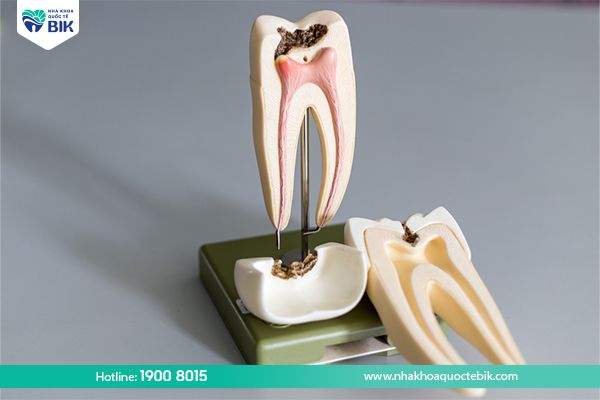
3.3. Not cleaning the entire root canal
When performing root canal treatment, the doctor will completely remove bacteria with specialized solutions such as CHX, NaOCl,… However, in the case of missed root canals as mentioned above, without the support of modern machinery, it will be very difficult for the doctor to completely kill the bacteria.
In addition, it is also possible that the doctor used the irrigation solution incorrectly, which will not be able to completely clean all the bacteria. The bacteria that exist in the root canal are usually anaerobic bacteria. If the filling is performed without cleaning all the bacteria, it will cause bad breath.
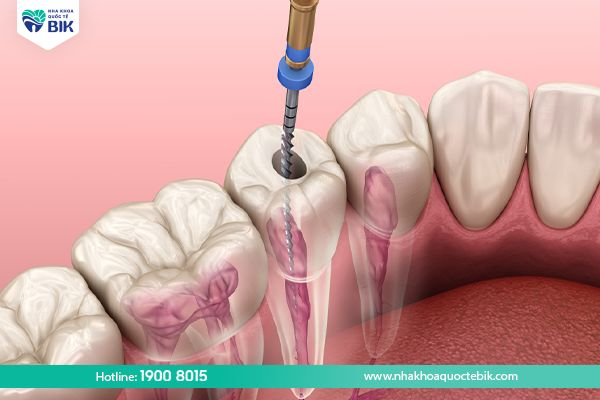
3.4. Bringing bacteria or necrotic tissue through the apex
During the root canal procedure, if the doctor is not careful or performs the procedure too forcefully, he can accidentally bring bacteria and necrotic tissue from the root canal to the apex of the tooth root. Bacteria from there have a favorable environment to develop and cause apical inflammation leading to pain, especially when biting the jaw together.
With the development of current dental technology, the working length measuring machine was born to help doctors develop promptly if the root canal needle is taken through the root tip. Therefore, customers should choose a dental address that is fully equipped with modern technology and equipment.
3.5. Root canal filling is missing or too apical
Root canal filling is a technique performed after cleaning and shaping the root canal. If this technique is not performed carefully, it can lead to pain after root canal treatment:
– If the root canal filling is missing, the root canal length is not enough due to not being fully shaped, not being cleaned deeply or there are errors in the filling process, the inflamed pulp tissue causes bacteria to remain, causing inflammation and pain.
– If the root canal filling is too apical: Currently, common root canal filling materials may not be biocompatible with periapical tissue. Therefore, if the root canal filling is too apical, the filling material will irritate the tissue at this location and cause pain.

4. How to relieve toothache after root canal treatment
In case you cannot visit a dental clinic, you can do the following to relieve pain at home:
– Applying ice: This is an effective pain relief method and ice helps the blood vessels in the gums and teeth to contract, reducing the number and pressure of blood vessels, improving pain symptoms. Patients should apply ice wrapped in a towel to the cheek area where the tooth has pulpitis for about 15 – 20 minutes.
– Rinsing with salt water: Salt is a highly antiseptic ingredient, so it is often used in oral care. Rinsing with salt water every day will clean the oral cavity, kill bacteria and quickly relieve pain caused by pulpitis and tooth decay.
– Use fresh ginger: Fresh ginger contains many nutrients, vitamins, and high levels of anti-inflammatory and antibacterial substances, so you can use ginger water to rinse your mouth for a long time to reduce pain caused by tooth pulp inflammation.
– Use garlic juice: Because garlic contains many ingredients that help prevent and inhibit the formation of bacteria, garlic juice is commonly used to kill bacteria and relieve pain in pulpitis.

5. Remedy for pain after root canal treatment at the dentist
When there is a feeling of pain as well as unusual symptoms after root canal treatment, the patient needs to go to the dentist as soon as possible for examination and X-ray to find out the specific cause of pain after root canal treatment, from which to propose a specific remedy:
– In case the root canal filling or tooth restoration is not done correctly, the doctor will remove it and restore it to be fuller and tighter than before.
– If the cause is due to the remaining root canal treatment, the doctor will thoroughly treat the root canal again.
– In case the tooth has a perforated pulp floor or apex, it cannot be restored, so the patient needs to extract the dead tooth and perform an implant to restore chewing ability as well as aesthetics.
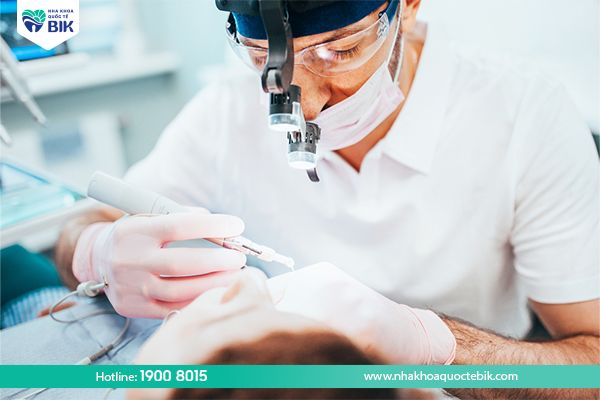
So customers can apply some ways to relieve toothache after root canal treatment as summarized above to feel more comfortable. However, to completely overcome the pain after root canal treatment, customers should go to the dentist for examination, X-ray to find the specific cause and prescribe appropriate treatment options.

